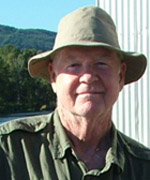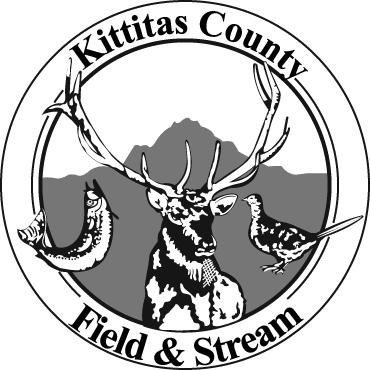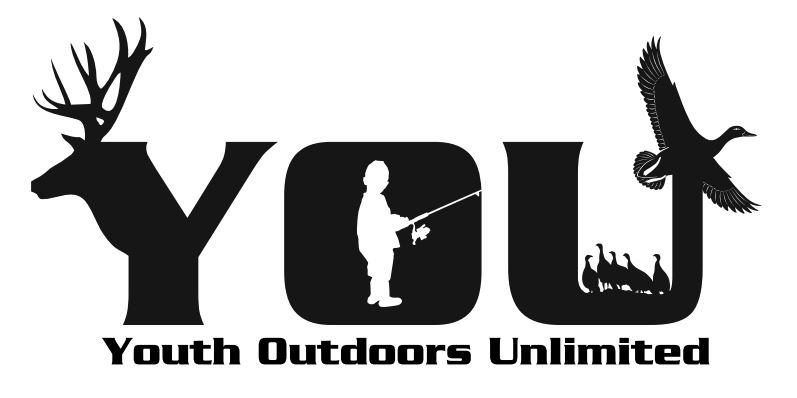Archive for January, 2014
Dream Time and Surviving Winter Surprises
This has long been my favorite part of winter—Mid-Winter Dream Time. Last weekend, I spent wandered around the Washington Sportsmen’s Show and Sport Fishing Boat Show at the fairgrounds in Puyallup. Next weekend, I will drop in on the Pacific Northwest Sportsmen’s Show in Portland, gathering scuttlebutt about our wild interests and catching up with my friends from Safari Afrika. In two weeks, we will all gather under the SunDome for the Central Washington Sportsmen Show—our annual local celebration of photos and all things wild in Paradise. These events allay our anxieties as we await the prime fishing and hunting of our new year. They also help us transform our dreams to reality.
The Washington Sportsmen’s Show in Puyallup was loaded, of course. The Heads ‘n Horns Competition is big. The fishing, hunting and care of wildlife seminars were full of eager learners. Kids were lined up to fish, shoot, tie flies and get overwhelmed with outdoor possibilities. The pros demonstrating magic on the “Steelhead River” showed us all a thing or two we had never considered. I could say the same thing about the Camp Cooking demos. The new event this year was the Fast-Draw Competition. With old-West pistols, wax bullets and fancy timers, greenhorns lined up to shoot against the best. I was struck by the quick hands of even new shooters—and then surprised by how far they were off the times of the pros who managed the shooting. The whole tent was filled with fun and laughter and very serious safety. Of course, one of my first stops is old friend and survival pro Peter Kummerfeldt in the Toyota Outdoors corner.
You probably recall that Peter was once son Tim’s survival instructor at the Air Force Academy. These days, he’s a hot-shot speaker and consultant, worth every moment you can get with him. He’s always refining his simple, take-along survival wisdom, kits, and books. The seminars he has been doing over the last decade and more have been credited with helping dozens of people save their backsides. His message is simple: “Use your brain wisely. Be prepared and a night outdoors may be inconvenient rather than life threatening.” A great deal of Peter’s teaching and writing is focused on what he calls “the psychology of survival.”
Given our very mild early winter in the high country—and the sudden heavy snow, cold, and traffic issues of our now-returning winter—I thought you might like a quick review of Peter’s “Spending a Night in Your Vehicle” handout.
Preparation. Interestingly, Peter will tell you that those who simply accept that the unforeseen can happen are the most likely to prepare in advance for it. Peter has a long list of emergency supplies, many of which are probably already in your car or with you—like your cell phone, tow strap, ice scraper, battery cables, knife, flashlight and batteries, a book, a shovel, kitty litter and your spare with a jack. The next list is somewhat abbreviated for your consideration; it will likely cause you to think of other important items to carry. Pack blankets and/or a sleeping bag, water, several dehydrated meals, peanut butter and/or high carb foods, toilet paper, a first aid kit, additional warm clothing, winter footwear, waterproof matches, emergency candles, duct tape and space blankets. Now, keep that together where you can reach it and make sure you have enough for everyone who will be in the car.
Psychology. If you get stuck, or trapped, don’t panic. Take inventory of your supplies and stay with your rig—it is your best shelter and a big signal device. Stay where you are—with all you need to be safe and comfortable. Let the rescuers come to you.
Your vehicle as a shelter. Think about how you will stay warm in the vehicle. Quickly put on your warmest clothes. Get into the blankets and/or the sleeping bag, with your feet off the floor (which cools quickly) and your head away from cold glass. Run the engine, if possible, for up to ten minutes on the hour or less on the half hour—paying attention to venting a window on the lee (downwind) side to avoid carbon monoxide poisoning. The candle(s) will provide heat, too, with venting. Use the space blanket and duct tape to enclose the smaller area you are occupying. If you get out, dress to the max.
Signaling. Call 911. When the snow stops—in daylight—clean off the top of the car so that it can be seen better. Use the mirror for signaling, and tie something to the antenna or a tree nearby. Do whatever you can to draw attention to your situation.
Appreciate yourself for preparing—and stay with your dry, safe vehicle.
While you are preparing, get more details, and take a look at the other ways Peter can help you and yours stay safe. Check out www.outdoorsafe.com.
Comments Off on Dream Time and Surviving Winter Surprises
All about Trophy Hunts
Last weekend, homey Bill Boyum and I spent some profitable hours touring the Yakima Training Center. We went to track down some troublemaking elk that could not stay off private cropland out in Badger Pocket. We settled, however, for accomplishing a pretty thorough study of the depth, density and tenacity of the fog which had settled over Paradise for a week and more. Somewhere in there, we settled several of the major issues facing hunters today.
On our drive back through the Canyon to Paradise, Bill spoke of an older friend who—after many years of applying—had drawn one of those precious Yakima Canyon bighorn ram tags. The guy hunted long and hard, and finally took a legal, but not huge, California bighorn ram. At that point, and for some time on, his son harassed him for not taking one of the monsters in that herd of sheep—a ”trophy.”
The whole conversation left me mulling over two experiences in my hunting life: my Quilomene deer tag and the day Bert Widhalm told me about a “trophy hunt.”
Back in ’01, after years of applying, I finally accumulated enough preference points to draw a permit for the late “any buck” season in the Quilomene. In the eyes of various homeboys around the valley, I had a ticket for a true “Trophy Buck Mule Deer Hunt.”
In the minds of many, the legendary bucks of the Quilomene are among the biggest muleys in the state. Time after time, it was, “Betcha want one of those big busters, huh?” “So, have you done your scouting? There are some monsters out there..” “You’re not going to settle for some little buck are you? You’re not just meat hunting are you?”
Over the 30 years I lived in Colorado, before returning home to Paradise, I managed several really big muleys. I certainly would not have minded making a couple hundred pounds of fine venison again, but I wanted the permit for the peace of the hunt. With limited numbers of licenses, and the number of deer in that wonderful sage and bitterbrush country, I figured I could really be alone with my hunt—and with the place.
Long gone now, Bert Widhalm was an old-time Colorado game warden. With little or no college, he worked his way up to win the Saguache District in the San Juan Valley on guts, ability and smarts. He was one of those wardens whose stare was legendary—not unlike Bill Essman. Bert could ask me a question while staring right through me. I’d have a sudden urge to confess sins I hadn’t even committed.
Bert took flack for not being a “biologist,” but no one knew bighorn sheep better. His Saguache herd was one of the healthiest in the West. Hundreds of sheep had been trapped and transplanted to start new or augment herds in good habitat in several states. They were his sheep.
One hot afternoon in the mid-1980s, over a malt beverage crisp from a tooth-chilling spring, I asked him what made a “trophy” bighorn.
“Well,” he said, “I always figured a trophy was a big old ram… One year in the ‘70s, this kid—maybe 32 or 33—drew a tag for my herd. He was tough. He scouted and scouted. He took the whole season off work and hunted hard. I knew I’d finally see one of my big old rams up close… Anyhow, he never found the one he wanted.
“A couple years later, the ‘kid’ drew another tag for a once-in-a-lifetime sheep. This time, I knew the kid would find the oldest, biggest, craftiest ram in my mountains. He kept me updated. He hunted most every day of the season. At the very end of the season, he brought his ram in to me for the required exam and measurement.
“I was flabbergasted,” Bert said. “It was a barely legal half-curl ram. …And that damned kid just smiled at me. ‘I know what you think,’ he told me, ‘but you gotta get this, you crusty old bast… I found rams no one has ever seen. I hunted my tail off. I passed on shots I didn’t like. I have been rained on and blown around and cold and hot and you name it. Then, I saw this ram bedded on a high, rocky, wind-swept ridge. I crawled to point-blank range. Through the scope, I could see the wind whipping the hair on the back of his neck. When I squeezed the trigger, he just laid his head down. Now you think what you want, Bert, but this is the trophy of my lifetime. I’ve had a trophy HUNT!”
With that Quilomene deer tag, I hunted my solitary fanny off. Sunrise, sunset and mid-day, I wore the sage and the bitterbrush, and tasted the desert air of fall. Sun at my back (or close), patiently working into the wind, I gently poked and prodded remote draws and breaks across the upper Quilomene. I looked over a hundred does and fawns, and passed on immature bucks. Not once did I find another hunter in my path. At most, I heard two sets of shots in one day.
With a little coaching, I finally found a young buck willing to give itself to my sustenance and good health. Only then did I place a finger on the trigger of my rifle. I often thought about what Bert might have said. Somehow, I knew he’d get it; I had experienced one of the best trophy hunts of my life.
You and Your (FREE) Outdoor Photo Contest
You, or someone you know, got a camera for Christmas. Chances are, it was a kid.
In keeping with my dual responsibilities as Contest Encouragement Chair for the Reecer Creek Rod, Gun, Working Dog & Outdoor Think Tank Benevolent Association and Prize Procurement Officer of the Kittitas County Field and Stream Club, I have a suggestion.
Perhaps the biggest photo contest ever held in our region is now underway. The contest, in association with Shuyler’s Central Washington Sportsmen Show, is co-sponsored by the Field and Stream Club and Cabela’s, which are providing ribbons and prizes. This year’s prizes include ribbons for all classes, winners’ photos printed on stretched canvas and Cabela’s gift cards. Enter your wildlife and wild places photos and encourage others to play.
Prizes will be awarded to winners in several adult and kid categories. The two age groups are 1) kids, 16 and under, and 2) 17 and older. This is a great opportunity to get young people psyched about, and started on, outdoor photography.
Deadline for entry of your digital photo (.jpeg format) is February 6—you have about three weeks. (Did I mention that it is free?) All photos will be continuously displayed during the Central Washington Sportsmen Show, in the SunDome, February 14, 15 and 16. Prizes will be awarded around Noon on Sunday, the 16th.
You have plenty of time to splash through the photos you are already thinking about entering, with time left over to get out into the valley and take photos of the wildlife all around us. Entering the digital photos themselves will take only a minute or so.
I am, herewith, providing a general overview of the contest, but for official instructions and rules, go to www.shuylerproductions.com and click on “Photo Contest.” Your .jpeg photos must be uploaded by midnight 6 February.
The entries must be photographs, not visual or graphic art manipulations. You must be the original photographer, and hold copyright to all photos submitted. Photographs of living fish and/or wildlife may include one or more people, and camp site scene photos are invited. Photographers may not excessively alter or change photographs with photo editing software. No print/film submissions will be accepted, and no profane language, violence, nudity, or personal attacks on people or organizations is allowed. You agree to indemnify Shuyler Productions for a mess arising from any violation of trademark, copyright or whatever in your photo. Shuyler gets to use your photo (with proper credit) as it sees fit, although you retain full ownership and copyrights. There are a few more details, but you’ll see them when you enter your photo. It is easy and straightforward.
Prizes and ribbons will be awarded on the basis of the judges’ decisions, and all decisions of the judges and/or the Photo Committee are final. Awards will be in two age groups, adult (seventeen and older) and youth (sixteen and younger). First and second place (and honorable mention) ribbons will be awarded for adult and youth photos and one “best of show” award will be given. Each winner will also receive a stretched canvas print (8” by 10”), suitable for framing, of his or her winning photo. Other prizes include Cabela’s gift cards.
All photos entered and accepted into the contest and exhibit will be displayed on a large flat screen TV during this week’s 2014 Tri-Cities Sportsmen Show (early entries only, obviously) and at the Central Washington Sportsmen Show in February. The entry deadline is 06 February and prizes will be awarded during the show—February 14 to 16 in the SunDome.
It’s free and fun and easy and you have three weeks. Go to www.shuylerproductions.com and click on the photo contest, then the link to enter photos. Fill out the online form and upload your photo. A series of two or more photos should be specified and uploaded in order. That’s all there is to it. If you run into a snag, contact Dennis Marquis at [email protected].
Did I mention that it is free, easy, and a great opportunity to get a kid of any age excited about wildlife and outdoor photography?
Comments Off on You and Your (FREE) Outdoor Photo Contest
On Being Goosed
As the sun climbed, Brad borrowed my binoculars to watch geese flapping on the distant Jackson Reservoir. “Yup,” he’d say, “they’re getting ready..” Each time I looked, those flapping wings were in the exact same spot. “Anytime, now,” He’d say.
10 a.m. I looked again at the flapping “geese” on Jackson. “Brad,” I ventured, “those things are starting to look pretty mechanical to me.. Like battery operated wings, or something.. And why would a goose come clear out here when metro Denver has all that greenery?” “Oh no, I’m sure they’re geese. They’re all over up here. Just be patient.” Then he hummed and smiled.
At one point, I looked toward the other blind. Ben and the DU guys were lolling in the decoys. When they saw me watching, they waved us out.
11 a.m. Brad talked me out of leaving the blind, and angrily motioned for them to return to theirs. “Hmmm,” I thought, as unacceptable possibilities crept into the back of my mind. Then, I thought, “Nah…” We threw snowballs at the decoys and looked at flapping geese.
12:00 Noon. More snowballs. Brad confirmed with me that it was Noon, then climbed out of the blind. Ben brought us lunches. Brad and Ben agreed that I’d stayed in the blind ’til noon. Brad hummed and smiled. Ben frowned.
Finally, I GOT it. There were no geese outside metro Denver. Brad and Ben knew it. With nothing else to do bet on until the Super Bowl, Brad had bet Ben that he could get me on the road before 4:00 a.m. and keep me standing in the middle of a cold empty cornfield until after Noon.
I know money was exchanged; Brad even bought my lunch. “Look at it this way,” he said. “Ben didn’t get a single goose, and you and I never missed a shot all day. Perfect!” He was humming and smiling. I was pretty sure I’d been goosed.
Now I’m thinking maybe I need to know a little more before heading to the Basin for geese.
Comments Off on On Being Goosed
Toward Tomorrow–A Children’s Outdoor Bill of Rights
About this time a year ago, Jerry Pettit and I started a conversation about firearms. Sometime not long after, we began discussing my ideas about a Washington Children’s Outdoor Bill of Rights.
Upon my return from Christmas in Denver, I intended to pick up the banner again. As so often happens when I put an intention into the Universe, the conversation becomes richer with intervening Denver moments.
I have a fair number of young Grand-Hucklings. All of the Hucklings who are parenting them have had extensive experience with firearms and the outdoors, and an abiding interest in their children’s outdoor connections. Our conversations about my hope for our statewide Children’s Outdoor Bill of Rights, and the safety and skills training which might accompany it, were positive and straightforward—it is critical for kids… and for our future. Given that these Grand-Hucklings range from three to 19, somewhere in there were conversations about age-appropriate training and outdoor opportunities.
The day after Christmas, my nineteen-year-old grandson stepped off a commuter train on Denver’s east side. Preoccupied with his University of Denver homework and his Kempo training, he realized too late that he was at the wrong station. Almost immediately, a young man shoved a handgun into his chest, and said “A bullet in your chest or get down!” Two others stepped in behind him, gently prodding him with knives and making small cuts in his coat. They relieved him of his laptop, his new cell phone and his wallet, but left him with his textbooks. No stranger to firearms and their handling, and well-practiced in the inner stillness of the proper Kempo response to sudden attacks, he remained calm and quiet. His first thought, he told us later, was “Why won’t he just say ‘Please?’”
Some hours after, a woman found his ID in the trash a distance from the station—and the $2,000 check my son had given him for tuition. The police took his statement and seemed genuinely concerned about the robbery (as well as security around these commuter rail stations), but without bloodshed, the incident apparently became a lower-priority problem.
On my drive back to Paradise, I found myself mulling over what I had NOT heard in the half-dozen or more times he retold the story of being robbed. Not once did anyone ask—other than the police—anything about the three guys’ ages or their ethnic/racial backgrounds. Over and over, I wondered if that was because such information just isn’t important anymore, or because we all knew already.
I have written about this stuff and I have spoken widely about this stuff. The bottom line is that more and more kids are learning to live without an earth connection, and that shows up as a sort of generalized fear in their lives. That fear is what causes so many young men to turn to violence—to a meanness—as a coping mechanism. I have no doubt that it is only through some hands on connection that young people develop a true sense of responsibility for themselves and others, and a sense of security in our own lives.
Over a couple decades of my life in Denver, I helped get many inner city and disadvantaged kids into the outdoors with the intention that they develop a connection with Nature which might ground them and help them navigate difficult times. I watched many of them blossom and light up, and I had genuine hope that none of them would one day shove a firearm into a person’s chest. Making sure children know that they have a fundamental right to connect with Nature and be exposed to the range of ways that we all connect is a huge step forward, I think.
Thus, Jerry and I continue pursuing thoughts about firearms, a public conversation about the issues with which people across America are struggling, and the proper form for our proposed statement of kids’ outdoor rights. As an active member of the Washington Sportsmen’s Outdoor Caucus, the 95-year-old Kittitas County Field and Stream Club (the oldest organized sportsmen’s group in the state) will present our proposed resolution to legislators who have already agreed to sponsor it.
It isn’t yet in the form we want it to be, but below is a pretty good idea of what we will pass along to Senator Roach’s Legislative Assistant, Charlie and the other sponsors. “The children of Washington have the right to discover and experience the outdoors through activities including the following: Create an outdoor adventure; Explore a trail; Camp under the stars; Go fishing; Discover nature; Explore Washington’s heritage; Go on a picnic; Play in a park, in the water, in the snow, on the rocks; Go hunting; Learn to be safe around firearms and other outdoor tools.”
Here’s to 2014, and building a foundation for our children’s safe outdoor future…
Comments Off on Toward Tomorrow–A Children’s Outdoor Bill of Rights







